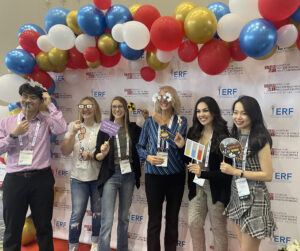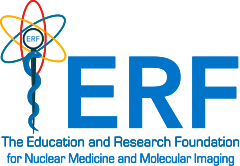Your gift can make great things happen.
You already know that we are dedicated to furthering research and education in nuclear medicine and molecular imaging. But you may not know exactly how we can use your gift to make that happen.
Your donations make our world better.
Your gift not only supports important education and research, but also improves the quality of life for those helped by important advances and breakthroughs funded by ERF. Consider just some of the work currently being funded using the generous gifts of our donors:
- Improving access to quality medical imaging in poor and medically underserved regions of the world
- Helping women advance to major administrative and/or leadership positions in the field
- Providing scholarships based on financial need, academic excellence, and program director recommendations
Your support helps further our mission.
How? When you make a gift to us, your valuable donation may go to any of the following areas:
- Providing essential financial support to physicians, scientists, and technologists to help launch their careers
- Funding and administering research grants that allow for cutting edge pilot research
- Funding and administering scholarships, fellowships, and awards that help students and trainees expand their knowledge base through educational activities or rigorous academic study
Make your gift more meaningful.
- A dedicated gift. You can make your contribution in honor or memory of someone special.
- A directed gift. You can choose to put your donation toward a particular program or initiative that resonates with you.
- An enduring gift. You can leave a powerful legacy by contributing to or creating an endowment fund to support your area of greatest interest in perpetuity. Read more about endowment gifts.
Simon Cherry: How your gift can make a difference.
Simon Cherry is a trailblazing researcher in the field of medical imaging whose pioneering work has significantly advanced our understanding and capabilities in nuclear medicine. As a professor at the University of California, Los Angeles, and subsequently at the University of California, Davis, Dr. Cherry's contributions include the development of high-resolution PET detectors, which have revolutionized small-animal imaging through technologies like microPET scanners and the first preclinical PET/MRI systems.

Simon Cherry
Dr. Cherry's groundbreaking research has been deeply supported by the Education and Research Foundation (ERF). While reflecting on receiving the prestigious Cassen Prize, he highlighted the crucial role of early funding:
"Indeed funding from the ERF was very important in my early career. It was among the very first independent funding I received and allowed me to start the high-resolution detector development work in my laboratory that ultimately led to the creation of the microPET scanners for small-animal imaging and indirectly to the first preclinical PET/MRI systems. It is vital for junior investigators to have access to seed funding for their new ideas to allow them to generate the preliminary data necessary to successfully compete for large-scale NIH grants. The ERF, therefore, plays a critical role in supporting the development of young scientists in our field, and I remain very grateful for their support early in my career."
Dr. Cherry's success underscores the transformative impact of supporting emerging scientists. By contributing to planned giving initiatives, you help ensure that the next generation of researchers has the resources needed to pioneer innovations that will shape the future of nuclear medicine. Your support continues a legacy of excellence and discovery, enabling breakthroughs that have profound implications for medical diagnosis and treatment.
By the numbers

ERF Awardees
ERF has donated almost $10 million since its founding, making sound investments in promising minds. For the field’s physicians and scientists, ERF provides pilot research grants, pre and postdoctoral fellowships, seed grants, and continuing education materials. Among those:
- 96% of recipients have published original research after receiving an ERF grant. 96% of those recipients were listed as the first, second, or last (senior) author.
- 59% of recipients have been recipients of other grants in the final or subsequent year of the ERF grant. 81% of those recipients were the principal or co-principal investigator of the grants, and 56% of the recipients were the principal or co-principal investigators of grants greater than $100,000.
- 15% of recipients have filed or received a U.S. patent in the final or subsequent year of their ERF grant.
- Over 450 technologist students have received assistance through ERF's Paul Cole Scholarship.
- 809 have attended the SNMMI Annual Meeting as a result of ERF travel grants.

